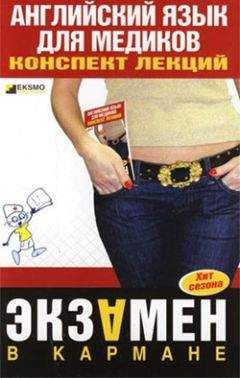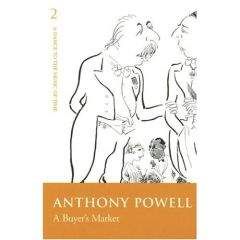salivary glands – слюнные железы
parotid – околоушная железа
gland – железа
discharges – увольнения
vestibule – преддверие
submaxillary – верхнечелюстной
submandibular – нижнечелюстный
lie – ложь
along – вперед
sublingual – подязыковой
Present Continuous Tense (действие происходит в процессе, совершается в тот момент, когда о нем говорят) = (now, at the moment)
Спряжение глагола to work в Present Continuous Tense Таблица 8
Раскройте скобки, употребляя глаголы в Present Continuous.
(NOW)
1. The boys (to run) about in the garden.
2. I (to do) my homework.
3. John and his friends (to go) to the library.
4. Ann (to sit) at her desk. She (to study) geography.
5. A young man (to stand) at the window. He (to smoke) a cigarette.
6. The old man (to walk) about the room,
7. The dog (to lie) on the floor.
8. You (to have) a break?
9. What language you (to study)?
10. Who (to lie) on the sofa?
Переведити на английский язык.
1. Я читаю.
2. Он не пишет.
3. Мы не работаем.
4. Вы читаете?
5. Он спит?
6. Коля и Миша играют в футбол.
7. Катя играет на рояле.
8. Она не поет.
9. Моя сестра спит.
10. Папа пьет чай?
Answer the questions.
1. Are all mammals well supplied with oral glands?
2. Enumerate small glands?
3. Where are the parotid gland situated?
4. Where is submaxillary located?
5. What is saliva?
6. What limits the digestive action of saliva?
7. How much is the daily amount of saliva?
8. How is the mammalian tongue divided?
9. What provides the sense of taste?
10. From what the body of the tongue is separated?
Make the sentences of your own using the new words (10 sentences). Find the verb to be in the text. Explain why it is used in such a way?
ЛЕКЦИЯ № 38. The digestive tract structure
The gastrointestinal tract and associated organs are collectively called the digestive system. This system is responsible for receiving food and breaking it down by using enzymes from the glands and by the movement of the various parts of the intestinal tract; for absorption of these components into the blood; and for eliminating undigested food and certain metabolic wastes from the body. The alimentary canal extends from the mouth to the anus. It is a long tube varying in size and shape depending on what function the particular part performs. The tract has a very good blood sup ply, because food, once it is broken down, has to be absorbed into the bloodstream. The mouth contains the tongue and the teeth and communicates with the salivary glands situated round it. Behind the nose and mouth is the pharynx. Leading from the pharynx is a mus cular tube called the esophagus which passes down the thoracic cavity to the stomach. The stomach lies below the diaphragm in the upper left side, of the abdominal cavity. The opening into the small intestine is called the pylorus and is closed by the pyloric sphincter. The small intestine is a muscular tube coiled up in the abdominal ca vity. It is divided into three parts; the duodenum, the jejunum, and the ilium. The large intestine, also a muscular tube but with wider lumen than the small intestine, is often called the colon. It is divided into several different parts: the, cecum, the ascending colon, the transverse colon, the descending colon, the rectum and the anal canal. The glands belonging to the digestive system are the salivary glands, the liver and the pancreas.
Stomach is probably the most distensible of any in the human body. The proximal portion is the cardiac portion; the portion above the entrance of the esophagus is the fundus; the distal portion is the pylo-ric part; and the body is between the fundus and the pyloric part.
The coats of the stomach are four: an outer, peritoneal or serous coat; a muscular coat, made up of longitudinal, oblique, and circular fibres; a submucous coat; and tine mucous coat or membrane forming the inner lining.
Gastric glands, which are in mucous coat, secrete gastric juice containing hydrochloric acid and other digestive enzymes into the cavity of the stomach. The glands of the fundus and body moot important in the secretion of gastric juice.
The shape of the stomach varies from individual to individual and from time to time in the same individual depending upon the degree of digestion, degree of contraction, and the age and the body-built of the individual. Frequently in more J-shaped than U-shaped so that its greater curvature can even lie in the greater pelvis. Cardia and fundus are relatively fixed and, hence, tend to move only with the respiratory excursions of the diaphragm.
New words
gastrointestinal tract – желудочно-кишечный тракт
associated – связанный
collectively – все вместе
digestive system – пищеварительная система
responsible – ответственный
receiving – получение
food – пища (еда)
breaking – ломка (нарушение)
using – использование
enzymes – ферменты
intestinal tract – кишечный тракт
absorption – поглощение
eliminating – устранение
undigested – неусвоенный
metabolic wastes – метаболические
alimentary – отходы
extends – пищевой
anus – задний проход
tube – труба
tract – трактат
round – вокруг
esophagus – пищевод
diaphragm – диафрагма
abdominal – брюшной
pylorus – пилорус pyloric
sphincter – пилорический сфинктер
coiled up – свернутый
Future simple tense (действие совершится в будущем)
Спряжение глагола to work в Future simple tense Таблица 9
Раскройте скобки, употребляя глаголы в Present Continuous, Present Simple или в Future Simple.
1. When you (to get) up every day? – I (to get) up at seven o'clock.
2. My brother usually (not to get) up at seven o'clock. As a rule, he
(to get) up at six o'clock, but tomorrow he (to get) up at seven o'clock.
3. Why she (to come) home so late to morrow?
4. We (to go) to the country the day after tomorrow.
5. Our friends always (to go) to the country for the week-end.
6. Look! The kitten (to play) with its tail.
7. Your parents (to watch) TV now?
8. My sister (not to rest) now. She (to help) mother in the kitchen. She (to help) mother in the kitchen every day.
9. Where she (to go) tomorrow?
10. She (to go) to the country with us tomorrow?
11. They (to stay) at home tomorrow.
12. What you (to do) now? I (to see) that you (not to read).
13. When you (to finish) your homework? It (to be) very late, it (to be) time to go to bed.
14. How you usually (to spend) evenings?
15. What you (to do) in the country next summer?
16. They (not to drink) ten now. I (to think) they (to watch) TV.
17. What your father (to drink) in the evening?
Answer the questions.
1. How are the gastrointestinal tract and associated organs collectively called?
2. What is the digestive system responsible for?
3. Where does the alimentary canal extend?
4. What shape do the alimentary canal have?
5. Has the tract a very good blood sup ply?
6. Why the tract has a very good blood sup ply?
7. What is behind the nose and the mouth?
8. What leads from the pharynx?
9. Under what does the stomach lie?
10. How does the shape of the stomach vary?
Make the sentences of your own using the new words (10 sentences). Find the verb to be in the text. Explain why it is used in such a way?
ЛЕКЦИЯ № 39. The progess of digestion
The process of digestion begins when food is taken into the mouth. Chewing Ы-еаго the food into smaller pieces, thereby exposing more surfaces to the saliva. Saliva itself has a double function. It moistens the food, so facilitating swallowing, and it contains the enzyme which begins the conversion of carbohydrates into simple sugars.
Although enzymatic action begins in the mouth, the major processes of digestion do not occur until the food passes down through the esophagus into the stomach. The stomach has both a chemical and a physical function. The walls of the stomach, which are protected by a layer of mucus, secrete gastric juices composed of several enzymes and hydrochloric acid. The most powerful enzyme is pepsin, which begins the process of converting proteins into amino acids. In addition, during these chemical reactions waves of contraction; and relaxation, known as peristalsis, move the walls of the stomach. They turn the food particles into a'semi-sqlid mass known as chyme.
From the stomach, the chyme passes into the small intestine through the pyloric sphincter. Much undigested food is still present Proteins have not been completely broken down, carbohydrates are still being converted into simple sugars, and fats remain in large globules. In the small intestine the process of digestion is completed by the action of the bile, which is secreted by the liver and released by the gallbladder, and by the action of various enzymes which are secreted by the pancreas and walls of the small in testine. Food which are still undigested pass on in a liquid state into large intestine. Absorption of the products of digestion taken place mainly through the wall of the small intestine.
Digestion
Chewing movements of the teeth, tongue, cheeks, lips and lower jaw break down food, mix it with saliva and roll it into a moist, soft mass called a bolus, suitable for swallowing.
Having been rendered suitable for swallowing the food is pushed back into the pharynx by the tongue, and enters the esopha gus to be transported rapidly down the neck and thorax, through the diaphragm to the stomach. The mucous membrane of the stomach is equipped with millions of glands secreting mucus, digestive enzymes and hydrochloric acid.
The small intestine is the region within which the process of digestion is completed and its products are absorbed. Although its epithelial lining forms many small glands, they mainly produce mucus. Most of the enzymes present are secreted by the pancreas, whose duct, opens into the duodenum. Bile from the liver also enters the duodenum.
The absorption of the product's of digestion also takes place in the small intestine, although water, salts, and glucose are ab sorbed from the stomach and the large intestine.
The large intestine is chiefly concerned with the preparation, storage and evacuation of undigestible and unabsorbable food residue.
New words
process of digestion – процесс переваривания
to begin – начинаться food – пища
to be taken – быть взятым
mouth – рот
diewing – жевание
smaller – меньший
pieces – части
thereby – таким образом
exposing – демонстрация
saliva – слюна
double – двойной
to moisten – увлажнять
facilitating – облегчение
contains – содержит
enzyme – фермент
conversion – преобразование
carbohydrates – углеводы
ашкя^ – хотя
action – действие
to pass down – передавать
through – через
stomach – живот
chemical – химикат
physical function – физическая функция
rendered – предоставленный
suitable – подходящий
tongue – язык
rapidly – быстро
equipped – оборудованный
hydrochloric acid – соляная кислота
absorption – поглощение
Спряжение глаголов в Past Simple Tense – правильные глаголы (действие совершалось в прошлом, когда время указано точно).
Спряжение глагола to work в Past Simple Tense Таблица 10
Спряжение глаголов в Past Simple Tense —неправильные глаголы Таблица 11
Перепишите следующий текст, употребив глаголы в прошедшем времени.
On Monday we have five lessons. The first lesson is Russian. At this lesson we write a dictation and do some exercises. Jack goes to the blackboard. He answers well and gets a «five». Pete does not get a «fi-ve'», because he does not know his lesson. After the second lesson I go to the canteen. I eat a sandwich and drink a cup of tea. I do not drink milk. After school I do not go home at once, I go to the library and take a book. Then I go home.
Answer the questions.
1. When the process of digestion begins?
2. What does chewing do?
3. Does saliva have a double function?
4. What does saliva contain?
5. Where does the enzymatic action begin?
6. What functions does the stomach have?
7. What is the most powerful enzyme?
8. What does pepsin begin?
9. By what is the food pushed back into the pharynx?
10. Where the absorption of the product's of digestion also takes place?
Make the sentences of your own using the new words (10 sentences).
Find the verb to be in the text. Explain why it is used in such a way?
ЛЕКЦИЯ № 40. Sources of energy
The fuels of the body are carbohydrates, fats and proteins. These are taken in the diet.
Carbohydrates are the principal source of energy in most diets. They are absorbed into the blood stream in the form of glu cose. Glucose not needed for immediate use is converted into glycogen and stored in the liver. When the blood sugar concentra tion goes down, the liver reconverts some of its stored glycogen into glucose.
Pats make up the second largest source of energy in most diets. They are stored in adipose tissue and round the principal internal organs. If excess carbohydrate is taken in, this can be converted into fat and stored. The stored fat is utilized when the liver is empty of glycogen.





![Rick Page - Make Winning a Habit [с таблицами]](https://cdn.my-library.info/books/no-image.jpg)